8 YOGA MUDRAS AND THEIR ASTONISHING BENEFITS FOR PRANIC HEALING
Yoga Mudras are specific hand gestures created to facilitate the flow of energy, Prana, in the body, and mind for optimal health.
‘Mudra’ is a Sanskrit word that literally means ‘hand gesture’. Many Hindu and Buddhist rituals and various dance forms use mudras to convey deeper meaning.
You may have heard of Yoga poses asanas and breathwork , pranayama, but did you know Yoga Mudras or hand gestures are also part of Vedic healing practice?
Yoga is an ancient practice that has been transforming lives for centuries now; we all know Yoga as a science of challenging physical poses called ‘Asanas‘ and breathing techniques called ‘Pranayama’ performed to keep the physical and mental bodies fit.
But wait, there is a lot more to it. Mudras are also part of Yoga’s healing power.
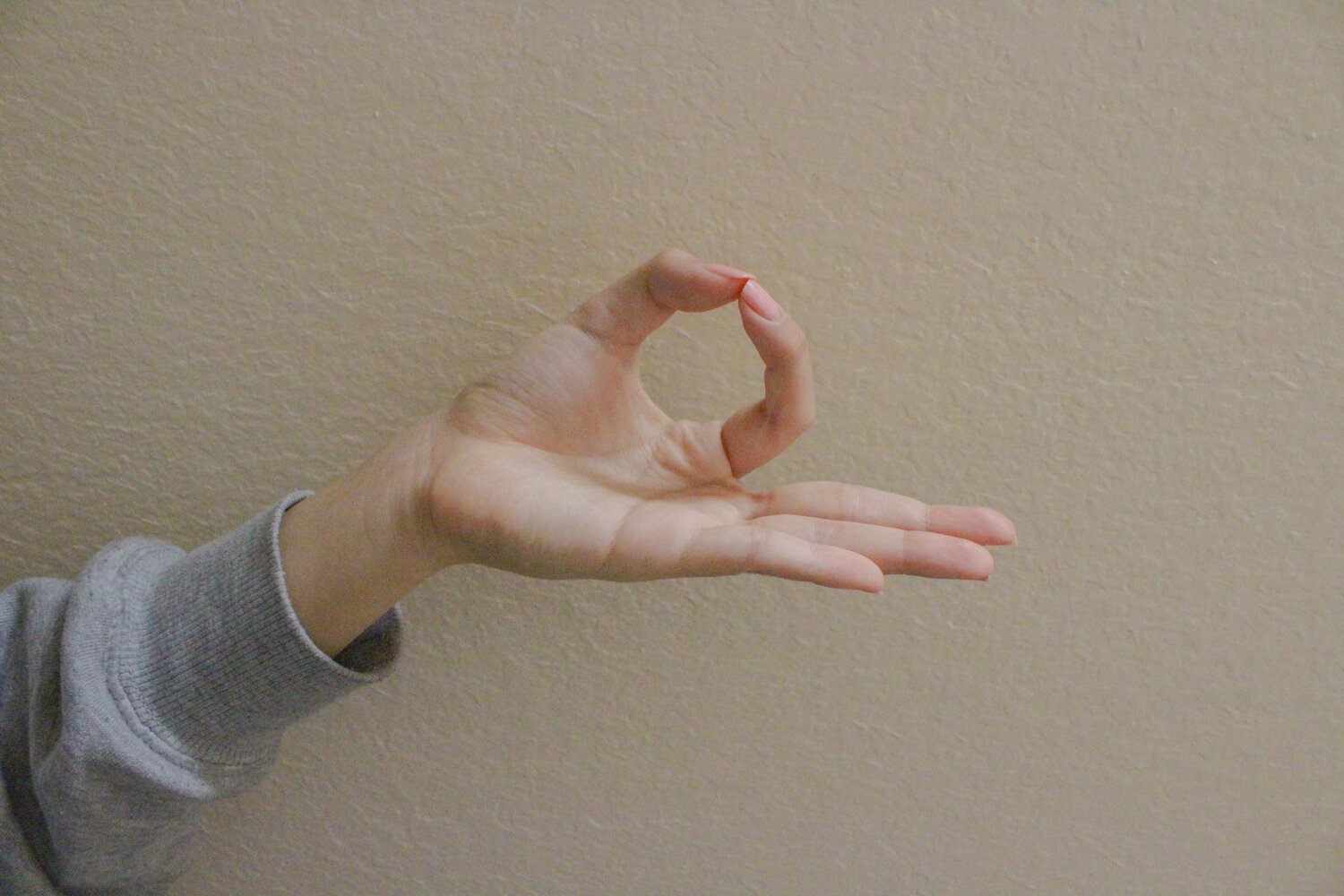
BUT, HOW DO YOGA MUDRAS WORK?
Yoga Mudra is the science of altering or redirecting energy flow in the entire body using hand gestures through acupuncture meridians, bringing our energy body to perfect alignment or balance.
Since hands contain all the acupuncture meridians they are considered to be the control panel of the body. The five fingers in a hand represent the five elements, Pancha Mahabhutas, of the body namely fire, water, air, sky, and earth.
According to Ayurveda, these energies are required to be in harmony for the body to be at its peak health and equilibrium.
(Read More About Ayurvedic Vata, Pitta, Kapha Energies)
The word “mudra” is derived from the Sanskrit words muda and dra, bliss dissolving, meaning that which dissolves duality and brings union between the Yogi and the Divine.
When we move our fingers and hands in a specific manner, either we bend, press, cross, extend or touch our fingers with other fingers, we are actually altering the flow of energy, prana, through these acupuncture points, which in turn, influence and stimulate specific areas of the brain and helps in bringing an elemental balance in the body.
This stimulation leads to experiences of well-being.
THE HEALING POWER OF YOGA MUDRA
Mudras have been used for thousands of years though many people may not be familiar with the word ‘mudras’, yet they make deeply meaningful hand gestures every day.
Think of the salutation gesture with both hands joined together called ‘Namaste’ that we practice daily to express gratitude; it is nothing but the ‘Anjali Mudra’ made with both hands, the right and the left.
Though healing is contingent on the kind of disease one has, a chronic one of course needs more time to come back to health.
Sometimes the situation is such that one cannot perform physical poses/Yoga asanas either because you aren’t well or are recovering from some injury/surgery, or in case you are traveling and not having enough space to do physical poses.
There is always an option to restore and refresh your energy by
doing some yoga mudras and get the benefits anytime, anywhere.
Yoga mudras can be used as a preventive measure as well. Consistent practice can definitely lead to overall well being.
By forming a specific mudra with our, hands, eyes, and finger position, we are able to move into states of transcendental consciousness.
HOW ARE YOGA MUDRAS PERFORMED?
You can practice Mudras in combination with meditation and breathing techniques to guide the flow of energy through the body. It requires time to become sensitive about the impact of these mudras.
To bring to practice, sit in any comfortable meditation position either in Sukhasana (easy pose), Vajrasana (diamond pose), or Padmasana (lotus pose).
Feel free to sit on a chair with your back straight if you are not comfortable sitting on the floor.
It is vital to prepare your hands before performing these mudras to experience the sensations.
It is ideally advised to sit in a calm and quiet place, free from distractions. Keeping the eyes closed increases the healing power and helps witness the sensations that arise.
- The first step is to rub your hands for a good 20 to 30 seconds to get the circulation going. You will feel warmth rising out of your hands from the friction, indicating activation of all the nerve endings in the hands, stimulating each cell linked to various organs.
- Place your hands onto your lap with palms facing up; in the serene and quietness of nature, try to quiet your thoughts to feel the tingling or pulsating sensations in your hands and your body. Stay in this position for at least 15 seconds.
- Then press your fingers in particular patterns to perform various mudras and apply enough pressure to feel the energy flow. Be gentle, less is more. Remember you cannot go wrong and harm yourself.
THE MOST POTENT HEALING MUDRAS AND THEIR EFFECT ON THE BODY
Our energy body to a great extent controls our physical body. The disease occurs due to an imbalance in energy in the various organs; mudras can help balance these energy levels/prana. Performing yoga mudras can be a powerful tool for healing.
Here are some commonly practiced mudra types with their pictures.
GYANA MUDRA OR CHIN MUDRA – MUDRA OF KNOWLEDGE
 Gyana mudra , a very commonly practiced yoga mudra. Image credit Soojin Lee.
Gyana mudra , a very commonly practiced yoga mudra. Image credit Soojin Lee.
This is one of the most extensively used mudras by yogis and the easiest to do. This mudra can be done anytime, and is usually performed with pranayamas and meditation.
HOW TO DO GYANA OR CHIN MUDRA
Put your hands on your lap, palms facing upward. Join the tip of your thumb with that of the index finger, stretch out the other three fingers on each hand and hold that position.
When the palm is facing upwards we are in Gyana mudra, when facing we are doing Chin mudra.
Watch this video to clarify the Mudra position and difference in quality.
BENEFITS OF PERFORMING GYANA OR CHIN MUDRA
- Improves concentration and enhances learning
- Helps to manage insomnia
- Eases tension and improves positive feelings
- Helps in depression
- Improves brain health and focus
- Good in relieving headaches
- Good for managing diabetes with medicines and diet
VAYU MUDRA – MUDRA OF THE AIR ELEMENT
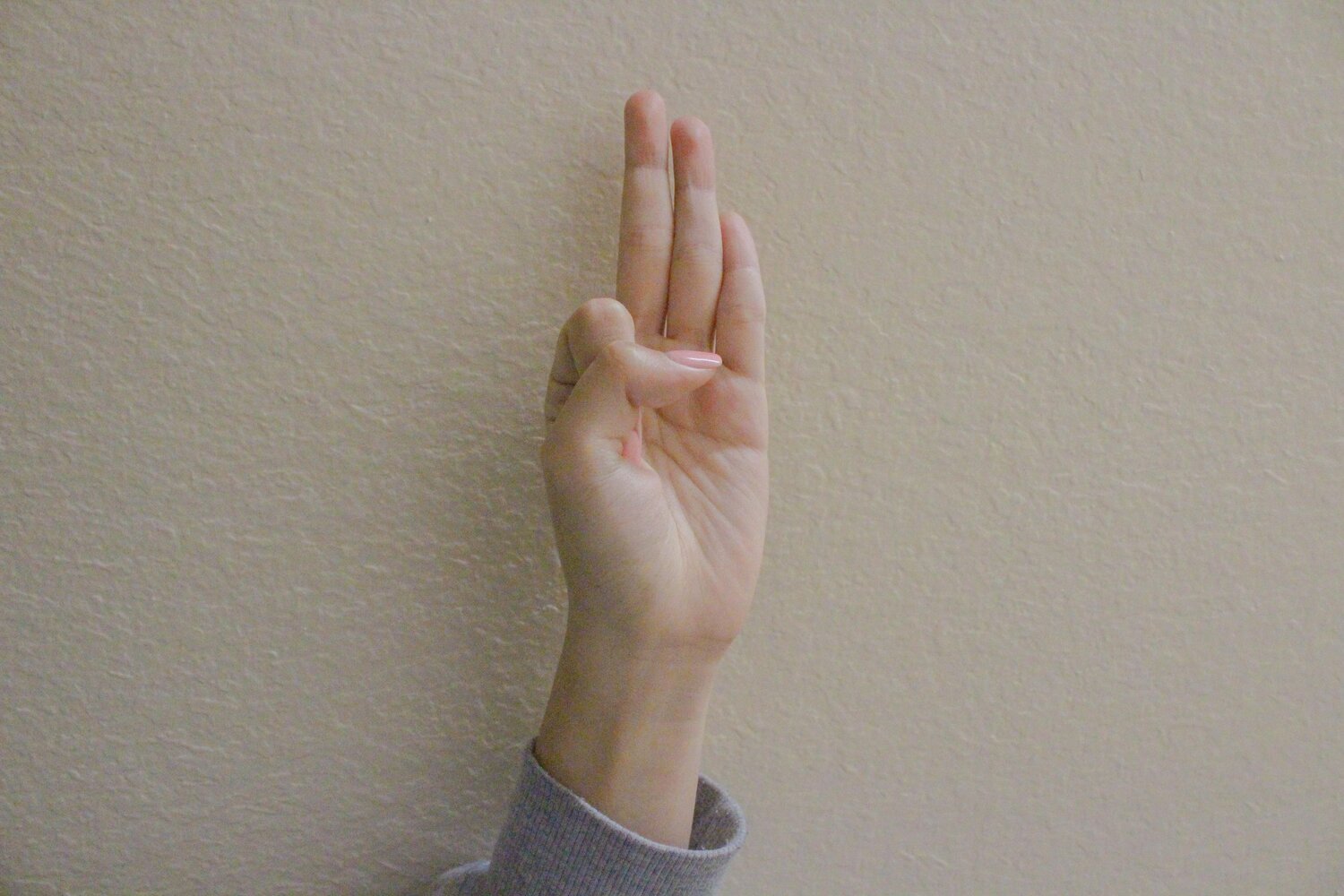
As the name says this mudra helps to balance the air element in the body.
The air element is associated with the Vata dosha, this mudra is excellent for vata body types and helps in relieving different types of pains like arthritis, sciatica.
HOW TO DO VAYU MUDRA
Fold your index finger and touch the second phalanx bone with the tip of your thumb. Apply gentle pressure so that the tip of index finger should touch the base of the thumb. Straighten the other three fingers and keep them activated.
BENEFITS OF VAYU MUDRA
- Eliminates excess air/gas, bloating from the body
- Helps in easing constipation
- Helps with relief from cervical spondylosis
- Relieves discomfort from arthritis, gout, parkinson’s disease and paralysis
- Relieves chest pain
- Provides immunity against cold and cough
- Works great for brittle, dry hair due to Vata Dosha
SURYA MUDRA – MUDRA OF FIRE ELEMENT
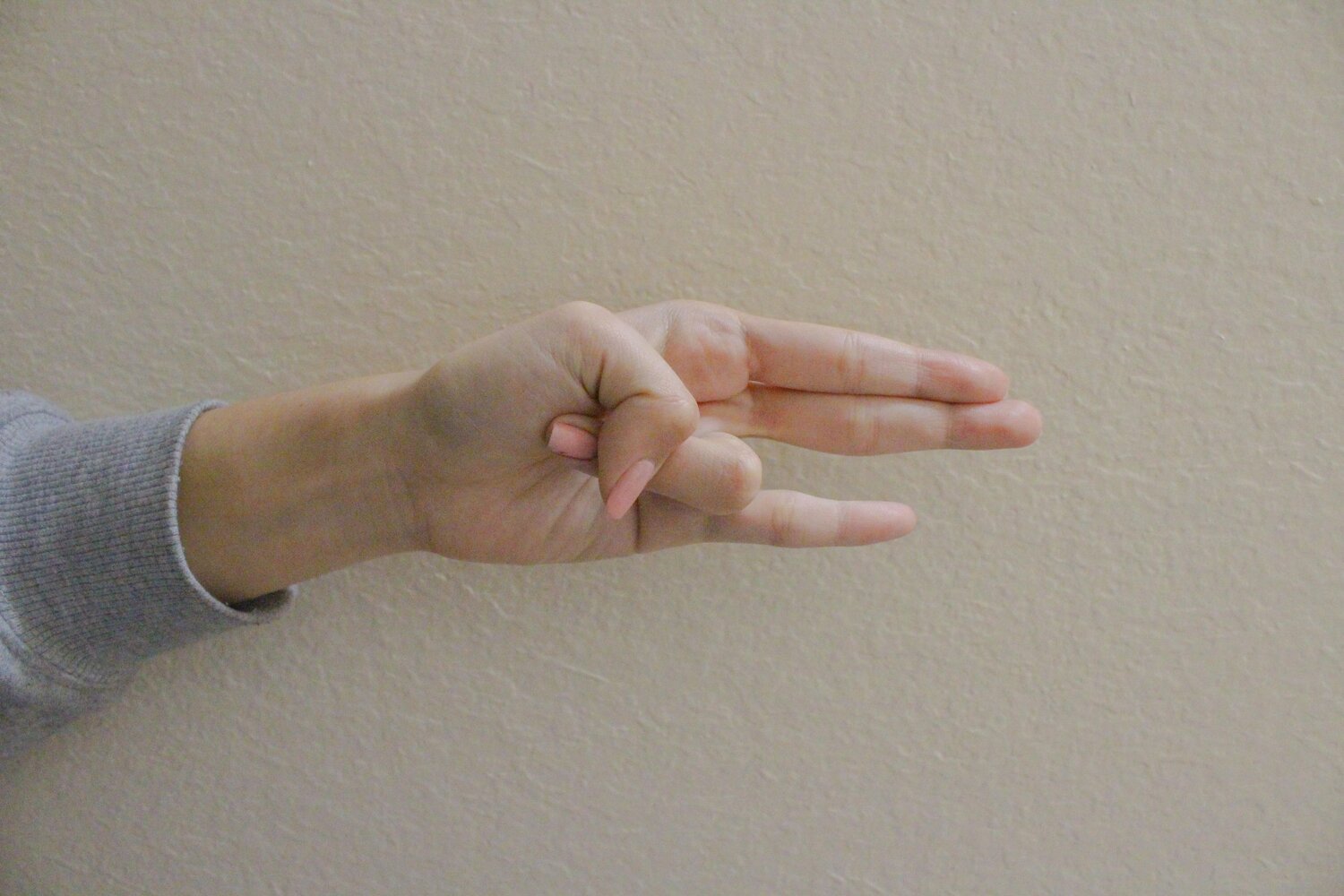
This is a very powerful mudra, the fire element is associated with the heat or metabolic functions in the body.
Practicing this mudra helps to maintain the right body temperature and boosts metabolism. This mudra increases the fire element and reduces the earth or Kapha element.
It is also called as ‘Agni Vardhak Mudra’ the mudra that increases Pitta fire or ‘Prithvi shamak Mudra’, the mudra that decreases Kapha Earth.
You should avoid this mudra or practice in moderation if you are suffering from indigestion or acidity.
HOW TO PERFORM SURYA MUDRA
Bend your ring finger inward, placing the tip of it at the base of the thumb and touch the second phalanx bone with the thumb and press a little. Stretch out the other three fingers.
BENEFITS OF SURYA MUDRA
- Helps in reducing the bad cholesterol
- Dissolves extra fat and promotes weight loss
- Improves metabolism and enhances strength
- Improves digestion
- Enhances discipline and ambition
- Imparts Tejas or lustre to the skin
Note: Practice this mudra on an empty stomach and in sitting position.
PRANA MUDRA – MUDRA OF LIFE FORCE
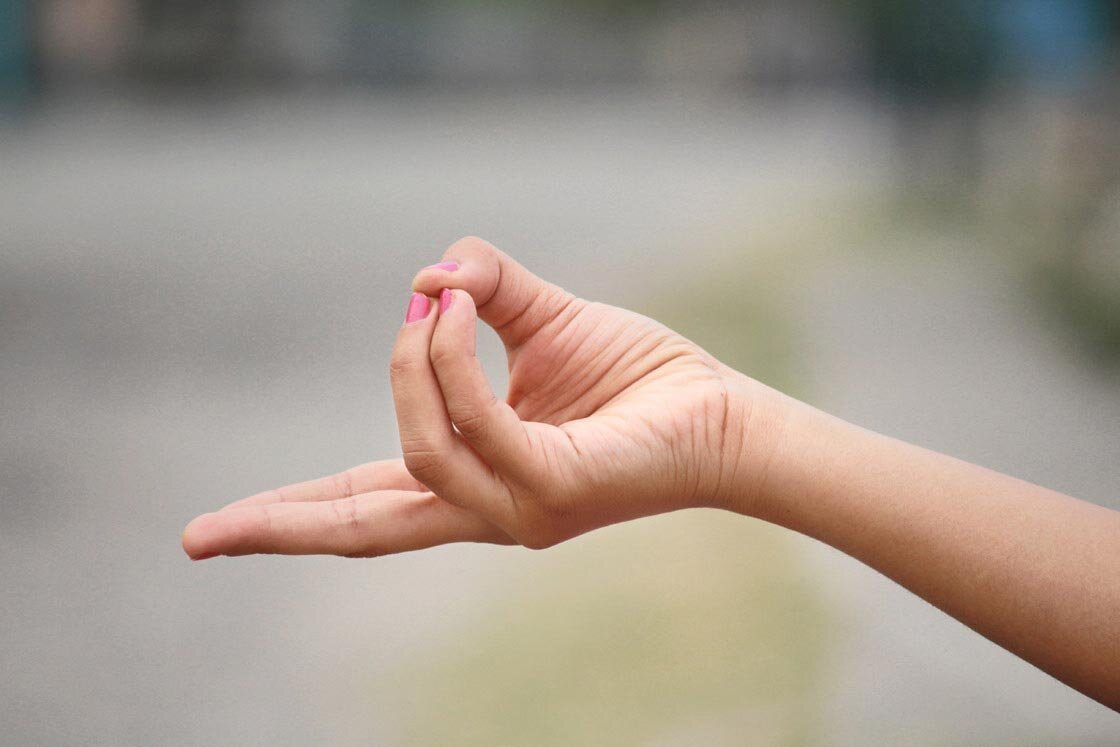
Prana Mudra for re-energizing the body,
This mudra helps in balancing life element in the body.
Whenever you are feeling exhausted and tired and you need that extra boost of energy, this mudra can get you a long way.
It helps with almost all of the diseases including cancer (if practiced regularly) and strengthens the eyesight and vision (not only as eyesight but also helps to have a clear vision of life).
This powerful mudra works on increasing the vitality and life force and brings hope, enthusiasm and joy to the life.
HOW TO DO PRANA MUDRA
Touch the tip of ring and little finger with the tip of the thumb and keep the other two fingers (index and middle) extended
BENEFITS OF PRACTICING PRANA MUDRA
- Strengthens the immune system
- Improve the flow of vital forces in the body
- Good for high blood pressure
- Sharpens the vision, improves eyesight
- Helps in proper blood circulation in body
- Relieves mental tension, anger, restlessness, frustration
- Soothes the digestion, relieves burning in stomach
PRITHVI OR PRITHVI VARDHAK MUDRA – MUDRA OF EARTH
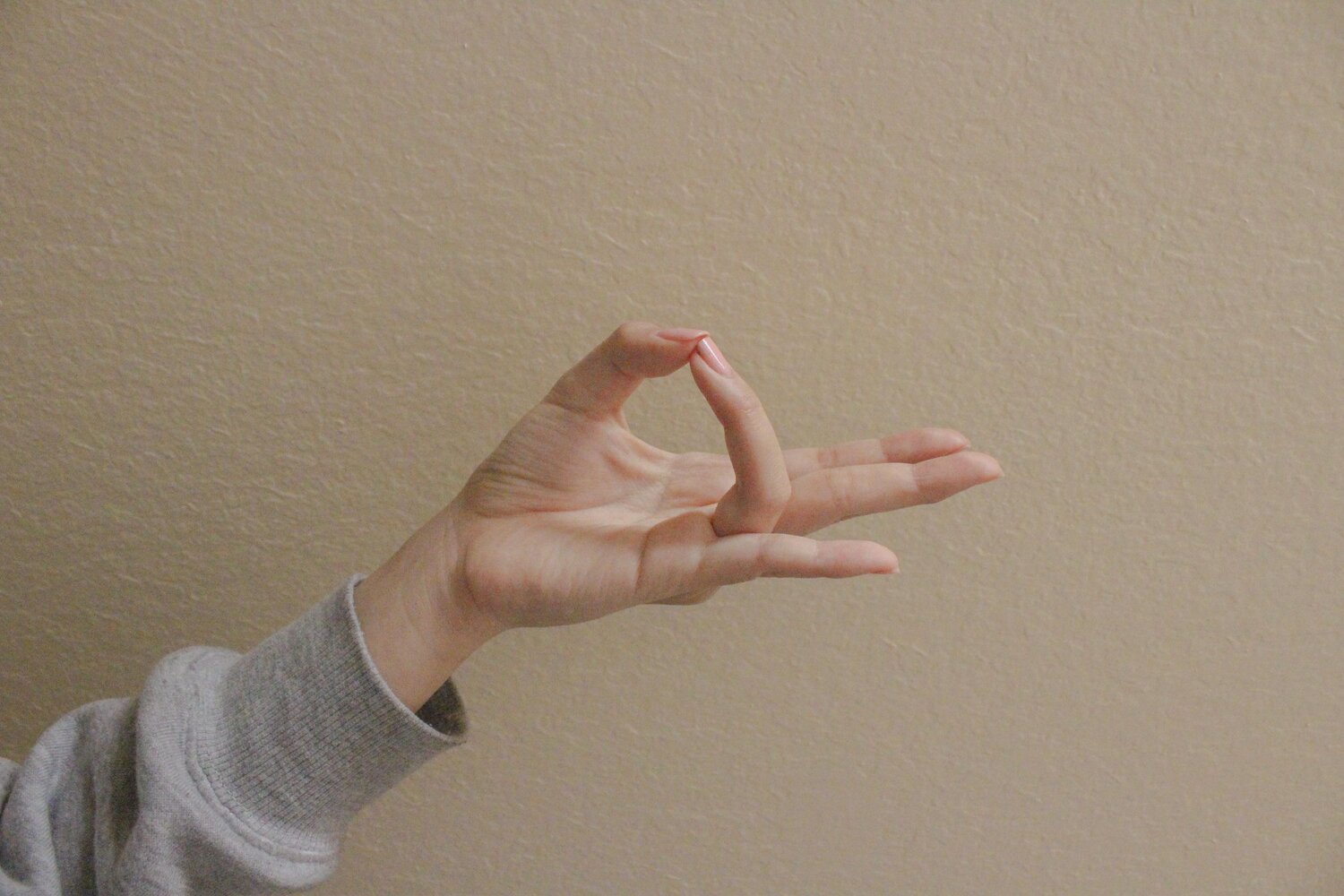
As the name says this mudra increases the earth element in the body and decreases the fire element. Earth element is a vital component of nails, hair, skin, bones, and muscles in the body.
Regular practice of Prithvi mudra can help repairing the tissues in the body and gives strength to the bones.
HOW TO DO PRITHVI MUDRA
Just join the tips of the ring finger and the thumb and keep the other three fingers straight and active.
BENEFITS OF PRACTICING PRITHVI MUDRA
- Good for any kind of skin diseases and rashes like urticaria
- Strengthens the tissues in the body including brittle nails
- Helps with premature graying, hairfall
- Promotes weight gain
- Helps to overcome fatigue, and during convalescence
- Gives strength to the bones and helpful in osteoporosis, osteomalacia, Arthritis
ANJALI MUDRA OR NAMASKARA MUDRA – MUDRA OF DEVOTIONAL LOVE
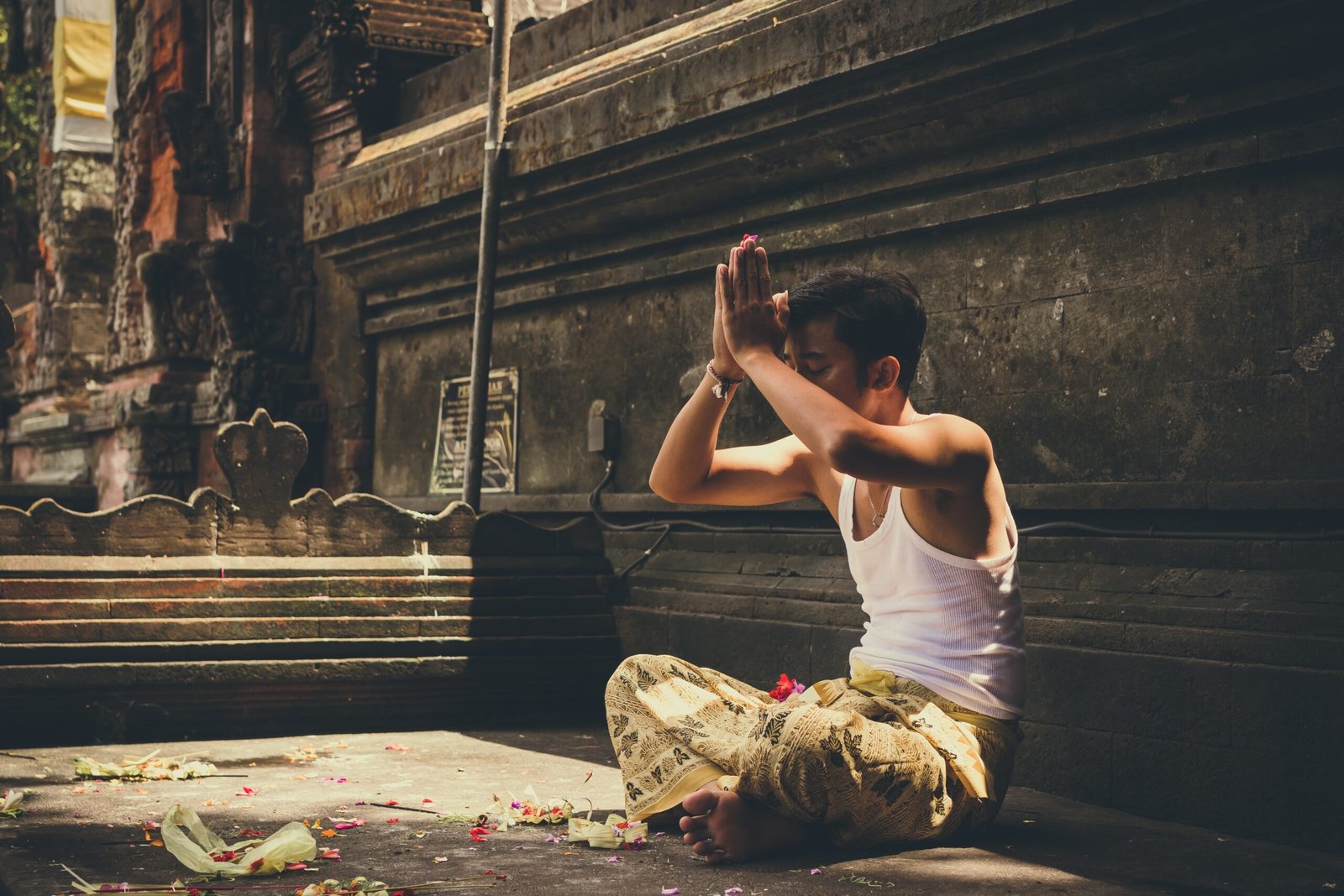
Now let us talk about a special and affectionate hand gesture – the Anjali Mudra or Namaskara Mudra. This gesture serves as an ideal way to journey towards deep inner peace and connect with your soul.
The Anjali Mudra, formed by bringing your palms together, resembles a unique offering at the spiritual altar. When you bring your hands together, it signifies a sense of love and devotion. This mudra allows you to unite your mind, body, and soul, creating a profound dialogue with your inner self.
The moment you adopt the Anjali Mudra, you’re essentially engaging in a deep conversation with your soul. It’s a gesture that transcends words and helps you connect with the universe on a spiritual level. This simple yet powerful gesture serves as a reminder of the unity between all beings and the divine presence within us.
So, the next time you bring your hands together in Namaste or Anjali Mudra, feel the warmth and interconnectedness it brings. Allow it to be a nurturing reminder of the beautiful journey towards self-awareness and spiritual growth.
HOW TO DO ANJALI MUDRA
Anjali Mudra, also known as Namaskara Mudra or Prayer Position, is a simple yet profound hand gesture commonly used in yoga, meditation, and spiritual practices. It symbolizes unity, respect, and connection. Here’s how to perform Anjali Mudra:
Starting Position: Begin in a comfortable seated or standing position with an erect spine. You can sit cross-legged on the floor or sit on a chair with your feet flat on the ground.
Hands Placement: Bring your palms together in front of your chest at the heart center. Your fingers should be pointing upwards. Keep your fingers close together, touching lightly or pressing gently. Depending on the divinity and respect, the hands can be then taken up to the throat center, the point between the eyebrows or above the head for respect and love towards the universe.
Alignment: Align the center of your palms with your heart center, which is located at the center of your chest, just above the sternum.
Posture: Keep your fingers relaxed and your wrists in line with your forearms. Maintain a gentle pressure between your palms, fingertips, and fingers.
Eyes and Breath: Close your eyes softly and take a few deep breaths. Inhale and exhale naturally, allowing your breath to be calm and steady.
Focus: As you hold the Anjali Mudra, bring your awareness to your heart center. Feel the connection between your palms and your heart. Allow any distractions or tension to melt away.
Intentions: You can use this mudra to set intentions, express gratitude, or offer a silent prayer. Feel the sincerity and respect in this gesture.
Duration: Hold the Anjali Mudra for a few breaths or for as long as it feels comfortable. You can use this mudra at the beginning or end of a yoga practice, during meditation, or as a gesture of greeting and respect.
Release: To release the mudra, gently lower your hands to your lap or allow them to rest by your sides. Take a moment to feel the effects of the mudra and the sense of connection it brought.
The Anjali Mudra is a beautiful way to cultivate a sense of inner harmony, gratitude, and mindfulness. It’s a reminder of the unity that exists within all of us and can be a powerful tool for centering yourself during your spiritual or meditation practices.
BENEFITS OF PRACTICING ANJALI MUDRA
Practicing Anjali Mudra, or Namaskara Mudra, offers a range of physical, mental, and spiritual benefits. This simple hand gesture holds significance beyond its outward appearance, and incorporating it into your practice can have a positive impact on your overall well-being. Here are some of the benefits:
1. Centering and Focus: Anjali Mudra encourages mindfulness and concentration. By bringing your hands together at your heart center, you draw your awareness inward, helping you stay present and focused on your practice or meditation.
2. Calming: The act of pressing your palms together stimulates the nerve endings in your hands, promoting a sense of calmness and relaxation. It can help reduce stress and anxiety levels, making it a useful tool during moments of tension.
3. Energetic Balance: According to yoga philosophy, the right and left hands represent the sun and moon energies respectively. By bringing them together in Anjali Mudra, you’re believed to harmonize these energies, creating a balanced state within the body.
4. Connection: Anjali Mudra symbolizes unity, respect, and connection. It’s a gesture that acknowledges the divinity within yourself and others. Practicing it regularly can foster a sense of interconnectedness with the world around you.
5. Heart Opening: Placing your hands over your heart center encourages an opening of the chest and heart area. This can create a physical sensation of expansion, as well as promote emotional openness and self-acceptance.
6. Gratitude and Intention Setting: You can use Anjali Mudra to express gratitude or set intentions. By holding a specific intention in your heart as you bring your hands together, you infuse the gesture with meaning and purpose.
7. Ritual and Ceremony: Anjali Mudra is often used as a greeting or as part of rituals and ceremonies. By incorporating this gesture into your daily life, you can infuse ordinary actions with a sense of sacredness and reverence.
8. Heart-Mind Connection: Physiologically, the fingertips are rich in nerve endings. When you press them together in Anjali Mudra, you stimulate these points and create a connection between the physical body and the mind.
9. Self-Reflection: The placement of the hands at the heart encourages introspection and self-awareness. It’s a gesture that invites you to connect with your inner self, fostering a deeper understanding of your thoughts and emotions.
10. Spiritual Connection: Many spiritual traditions emphasize the heart center as a point of connection with higher consciousness. Anjali Mudra can enhance your spiritual practice by serving as a bridge between the physical and the spiritual.
Incorporating Anjali Mudra into your yoga, meditation, or daily routine can enhance your overall experience and bring about a sense of peace, balance, and connection. Whether used as a gesture of greeting, a moment of reflection, or a tool for inner calm, this mudra holds the potential to enrich your life on multiple levels.
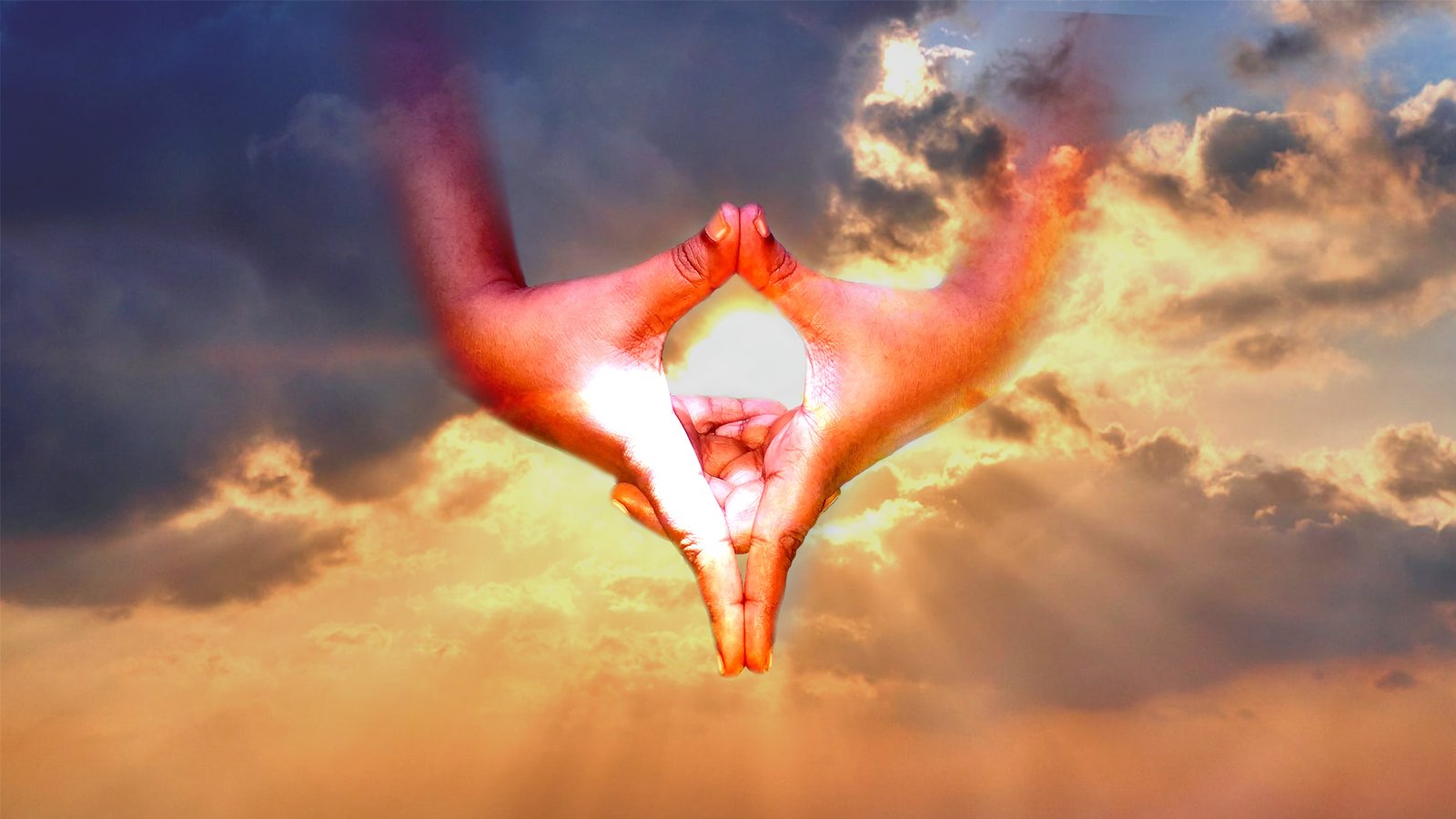
UTTARABODHI MUDRA – THE MUDRA OF TRANSCENDENT WISDOM
Uttarabodhi Mudra is a symbolic and meaningful hand gesture in yoga and spiritual practices. This mudra holds a deep significance and is often used to convey profound concepts and energies. Let’s explore the significance of the Uttarabodhi Mudra:
1. Enlightenment and Awakening: The term “Uttarabodhi” translates to “supreme awakening” or “highest knowledge.” This mudra is associated with the awakening of the highest spiritual consciousness, representing the journey towards enlightenment and self-realization.
2. Gesture of Wisdom: The positioning of the hands in Uttarabodhi Mudra resembles an open book or a lotus blossom unfolding. It symbolizes the opening of the “book of wisdom,” signifying the blossoming of profound knowledge and insights.
3. Connection with Higher Self: By joining the thumb and forefinger in Uttarabodhi Mudra, you create a circle, representing the unity and continuity of all existence. This unity extends to the connection between your individual self and the universal consciousness.
4. Blessing and Radiance: The raised index finger in this mudra points towards the heavens or the divine realms. It signifies the channel through which divine blessings and wisdom flow into one’s life, infusing it with light and radiance.
5. Gesture of Teaching: In certain traditions, Uttarabodhi Mudra is used by spiritual teachers and gurus to transmit knowledge and blessings to their students. The mudra is believed to facilitate the transmission of higher wisdom and spiritual energy.
6. Expanding Consciousness: The upward-pointing finger suggests the upward journey of the soul, moving beyond the material world towards higher realms of consciousness. It represents the aspiration to transcend limitations and expand one’s awareness.
7. Invoking Cosmic Energy: The fingertips represent the merging of individual energy (represented by the thumb) with cosmic energy (represented by the index finger). This combination is thought to invoke and harness divine energy for spiritual growth.
8. Unity of Opposites: The thumb and index finger coming together in this mudra represent the union of opposites, such as masculine and feminine energies, creating a state of equilibrium and harmony.
9. Activation of Chakras: The positioning of the fingers in Uttarabodhi Mudra can stimulate specific energy points, such as the root of the thumb corresponding to the root chakra, enhancing the flow of energy throughout the body.
10. Alignment with the Divine: Uttarabodhi Mudra is a physical representation of aligning one’s intentions, thoughts, and actions with divine guidance. It serves as a reminder to stay connected to higher principles and ideals.
Here is a short video demonstration of Uttarabodhi Mudra
Incorporating Uttarabodhi Mudra into your meditation, yoga, or spiritual practices can help you connect with the deeper dimensions of your being. This mudra encourages you to embark on a journey of self-discovery, awakening, and alignment with the universal truths that transcend our physical existence.
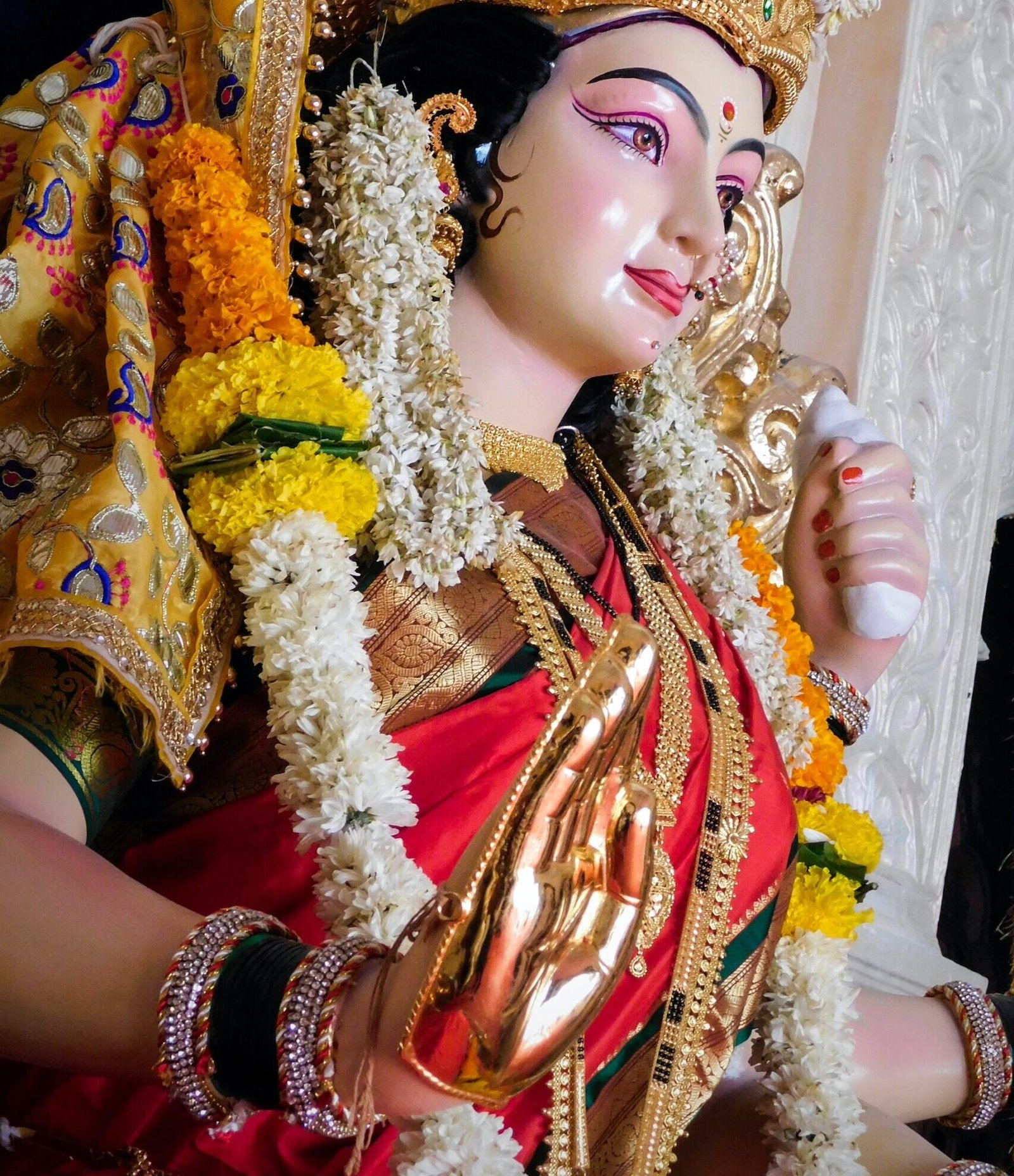
ABHAYA MUDRA – THE MUDRA OF PROTECTION
Let’s delve into the beautiful Abhaya Mudra, its connection to Gods and Goddesses in Sanatana temples, and the profound significance it holds.
Picture this serene scene: the gentle curve of a hand held in the Abhaya Mudra, fingers extended outward, palm facing forward. This hand gesture carries with it an essence of unconditional love, comfort, and courage. Abhaya Mudra is a reminder that we are embraced by fearlessness and protected by divine energy.
Why Goddesses in Temples Hold Abhaya Mudra
When you enter a temple and gaze upon the statues of goddesses, notice the Abhaya Mudra. These graceful figures, often depicted with a serene smile and adorned in resplendent attire, offer their devotees a gesture of assurance and solace.
Significance of Abhaya Mudra
The Abhaya Mudra symbolizes the absence of fear. It’s as if the goddess is whispering, “Fear not, dear one, for you are under my loving care.” With this gesture, goddesses embody a maternal presence, enveloping us in their protective embrace.
As we stand before these divine representations, their Abhaya Mudra invites us to shed our worries and uncertainties. It’s a call to release the weight of our fears, just as we might confide in a trusted friend. The gesture reassures us that no matter the challenges we face, we are supported and guided.
The Loving Touch of Fearlessness
Imagine, for a moment, standing before a nurturing figure, her hand reaching out in the Abhaya Mudra. As you gaze into her eyes, you’re met with boundless compassion and understanding. In her presence, the storms of doubt and anxiety subside, replaced by a sense of calm.
The Abhaya Mudra carries the essence of a mother’s soothing touch, calming a child’s racing heart. It reminds us that we possess an inner wellspring of strength and resilience. By embracing this gesture in our hearts, we can navigate life’s challenges with grace and faith.
So, next time you stand before a goddess in a temple, take a moment to connect with her Abhaya Mudra. Feel the warmth and love emanating from it, and allow yourself to be cradled in the arms of fearlessness. Just as a child finds solace in a mother’s arms, let the Abhaya Mudra remind you of the boundless love and protection that surround you on your journey.
THE DURATION FOR PERFORMING MUDRAS
Whichever mudra you wish to perform, it takes at least 30 seconds to trigger the sensations. Mudras should be held at least for 2 minutes to notice results in calming, soothing or activating the body. Mudras can be held for as long as one can, up to 45 minutes in a day’s time.
CONCLUSION
This was all about the Yoga Mudras and various benefits one can derive by performing them. It also gives us the idea that we can be the master of our own health and make it better with the abundantly rich ayurvedic system of medicine.
Yoga mudra practices combined with meditation and breathing techniques can help us live a life full of joy free from misery. Which one would you practice first?
Read More About Ayurvedic Vata, Pitta, Kapha Energies
Edited by Salila Sukumaran
Content Partially Created by Meenu Gakhar.
Meenu Gakhar
I am Meenu Gakhar; my journey is all about being a Professional turned into a full-time blogger and content writer. I am a Yoga and fitness enthusiast with a special interest in Naturopathy and Ayurveda when it comes to the health approach that I pursue. I believe nature has the immense power to cure anything. My blog is about sharing the information on the modern day problems related to physical, mental and emotional health and some quick tips to deal with them. Stay healthy!!!






Your writing style is fantastic – engaging, clear, and informative. Great work on this article!
I’ve been following this blog for years and it’s amazing to see how much it has grown and evolved Congratulations on all your success!